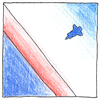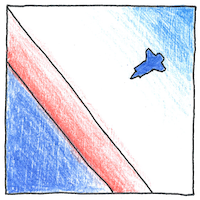Richard Assmann,
Léon Teisserenc de Bort
atmospheric sciences

|
Stratosphere
Unmanned high-altitude hydrogen balloons hoisting scientific instruments to record pressure, temperature, humidity, and winds Richard Assmann and Léon Teisserenc de Bort separately released hundreds of such balloons and discovered that the lapse rate of temperature stopped decreasing with height at 39,000 feet up, and began to increase, marking the tropopause, where the stratosphere begins.
Stratospheric facts
In the stratosphere, cooler layers lie closer to the earth. Cold temperatures of the lower stratosphere freeze-dry air rising from the troposphere. Ozone in upper levels stratosphere absorbs ultraviolet radiation from the sun. Stratification of temperatures results in little vertical convection. Commercial aircraft fly above the tropopause in the lower stratosphere. Few birds fly so high but bacteria survive in the stratosphere.
Living in the sky
Living in the sky with my feet on the ground, I can’t help breathing air of the troposphere. Altitude gives me airs where gases are rarefied. An atmospheric wind blows hair in my ears.



In the troposphere, temperatures decrease with altitude. Above the troposphere, in the stratosphere, temperatures increase with altitude. Above the stratosphere, in the mesosphere, temperatures again decrease with altitude. And above the mesosphere, in the thermosphere, temperatures again increase with altitude to where individual molecules become very hot but are so widely scattered that you wouldn’t feel their heat.
See also in The book of science:
Readings in wikipedia: